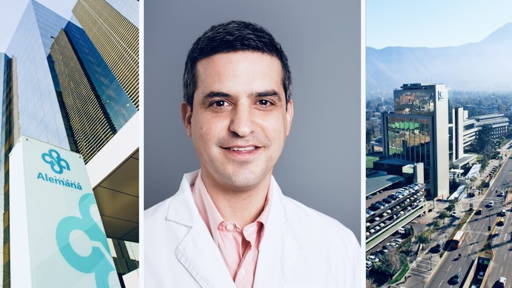Close collaboration between the Icahn School of Medicine at Mount Sinai, the Memorial Sloan Kettering Cancer Centre and European partners proves that artificial intelligence (AI) can significantly accelerate lung cancer diagnostics. The parties conducted a joint study showing that a computational pathology baseline model can accurately predict genetic mutations from routine H&E-stained biopsy specimens, without the need for expensive, time-consuming genetic testing.
The AI model developed by Mount Sinai was trained on the largest pathology dataset of patients with lung adenocarcinoma, combined with sequencing data from multiple centres in the US and Europe. The focus was on recognising EGFR mutations. These are genetic changes that make tumours highly susceptible to targeted therapies. By predicting these mutations using standard pathology images, AI offers a fast, efficient and cost-effective way to detect tumour characteristics. ‘We asked ourselves: can we train AI to predict genetic mutations using H&E slides that are routinely used?’ said Dr Gabriele Campanella, lead author and AI researcher at Mount Sinai.
Real-world clinical trial
In a unique “silent” real-time study, in which AI co-analyses without influencing clinical decisions, the technology was implemented at the Memorial Sloan Kettering Cancer Centre. The AI model's predictions remained hidden from clinicians but showed accurate detection of EGFR mutations and potentially a reduction of more than 40 per cent in the number of urgent genetic tests. Retrospective analyses in multiple hospitals confirmed the generalisability of the method. The research was recently published in Nature Medicine.
According to Dr. Campanella, integrating this type of AI tool can speed up care decisions, save resources, and improve access to targeted therapies, even in hospitals with limited genetic diagnostics. By identifying patients with potentially dangerous mutations earlier, oncologists can start targeted treatments faster, while others can avoid potentially unnecessary tests altogether. ‘This isn't just efficiency: it's cost-effective, personalised care,’ said Alexander Charney, MD, PhD, co-author of the study.
Steps towards wider application
The research team is continuing the silent trial and expanding data collection to multiple hospitals. With regulatory approval in mind, the next steps are: validation of additional biomarkers, expansion to other tumour types, and field testing in resource-poor settings. It is precisely there that AI can fundamentally improve care by replacing or supplementing genetic diagnostics.
This study illustrates how AI can be responsibly integrated into the clinical workflow: the model is transparent, explainable and designed for existing processes. In this way, AI-driven solutions strengthen the diagnostic toolbox, bring medical science fields such as pathology and genomics closer together and lay the foundation for data-driven medical decision-making.
AI accelerates cancer care
At the end of last year, we wrote about another development that enables real-time tumour analysis during surgery. This method, called PUV-PAM technology, was developed by researchers at Caltech. PUV-PAM can analyse thick, irregular samples in the operating theatre. By scanning multiple light points in parallel with a laser, the technique is about 40 times faster and can examine a 1 cm² sample with microscopic resolution within five minutes. This real-time imaging can immediately show whether all tumour cells have been removed, potentially avoiding additional surgeries.
Three years ago, researchers at the Mahmood Lab (Brigham and Women's Hospital) developed an AI algorithm that can predict the progression of fourteen types of cancer from patient data and genomic information from The Cancer Genome Atlas (TCGA). This system combines genomic sequencing, pathology data and patient history to anticipate future disease progression. This can help doctors draw up faster and better-informed treatment plans and improve outcomes for patients.









